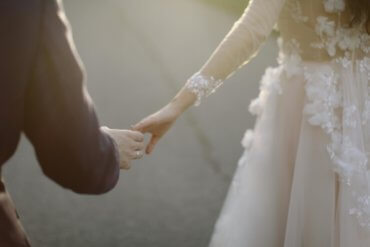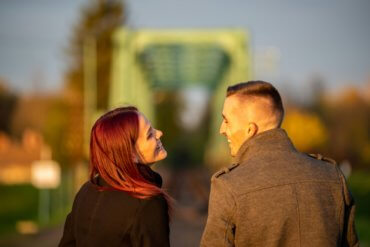
The Beauty of an Orthodox Jewish Wedding
Even though it’s the Omer right now, and weddings and other celebrations are forbidden because we are in mourning, wedding season will soon be upon us.
Jewish weddings are unique; they come with their own customs and traditions. You may have seen people dancing the Hora and lifting the bride and groom onto chairs at Jewish weddings depicted in movies and on TV. However, there is much more to it than that.
I got married July 30, 2015, on Tu B’Av, the Jewish day of love. It’s when single people go out and try to find their soulmate, or in Hebrew, their bashert. It comes after another mourning period, the Three Weeks, which culminates in Tisha B’Av, the saddest day of the Jewish calendar. We go from this darkness to light after the Three Weeks nad on Tu B’Av – this encapsulates the story of the Jewish people.
Here are some of the Jewish traditions I learned about and incorporated into my wedding, which was one of the happiest and most fun and meaningful days of my life. If you’re going to a Jewish wedding soon, here’s what to look out for.
The Kabbalat Panim and Tisch
My husband Daniel and I did not see each other for a week leading up to our wedding. This is a custom, and it was so special when we finally did see each other after our Kabbalat Panim and tisch. At the tisch, the men gathered, and Daniel signed the ketubah, our marriage contract that outlines the husband’s responsibilities to the wife. I sat on a “throne”-type chair, welcomed my family and friends, and gave them blessings. When both of these were complete, Daniel walked towards me with the men singing and playing guitar behind him for our bedekin.
Bedekin, the Veiling of the Bride
The Bedekin comes from Jacob marrying Leah instead of Rachel in the Torah. Now, all Jewish men check to see that their bride is the right bride and there is no mixup at a ceremony called the bedekin. Daniel verified that it was me and then put my veil over me before we walked down the aisle.
The Chuppah
The chuppah is the marriage canopy where the ceremony takes place, and the rabbi marries the bride and groom. At our wedding, Daniel’s three brothers and a friend held up the chuppah, which was incredibly special. It was a sunny day overlooking a beach in Malibu, and we got married a little before sunset. The day was made extra special by the fact that I had just converted to Judaism. We handed our booklets to family and friends, including my non-Jewish family members, so they knew what was going on. I approached the chuppah by circling Daniel seven times, which symbolized how we were creating a new family unit and our own little world together.
The Blessings
Jewish weddings contain a number of blessings, like the blessing over wine, the traditional symbol of abundance and joy. There is a blessing when the groom places the ring on the bride’s finger and then over a second cup of wine and the Seven Blessings, the Sheva Brachot. We then break the glass wrapped in cloth to remind us of the destruction of the Temples in Jerusalem. Once we did that at our wedding, we heard shouts of “Mazal tov!” as we walked back down the aisle.
The Yichud Room
After the chuppah, the bride and groom go to a private room, called the yichud room, for time alone together. They sit and eat and talk; they have been fasting all day typically. We spent our time hugging and smiling. We were both so happy.
The Dancing and Meal
We ran out of the yichud room and danced with our family friends; the men and women danced separately, and people did “schtick” or funny things for us. We got lifted on the chairs as well. Everyone sat down to eat a certain point, and when we said the after blessings, we did the Sheva Brachot, giving honors to different men.
Sheva Brachot Meals After the Wedding
Our friends hosted sheva brachot meals for us for seven nights after the wedding. It was a beautiful way to enter into our marriage and our new life together, being surrounded by our friends, family, and community.
If you are going to a Jewish wedding this summer, you will see just how meaningful it is. I hope you are able to dance, laugh, sing, and celebrate with your loved ones at the ceremony and beyond.
If you found this content meaningful and want to help further our mission through our Keter, Makom, and Tikun branches, please consider becoming a Change Maker today.






